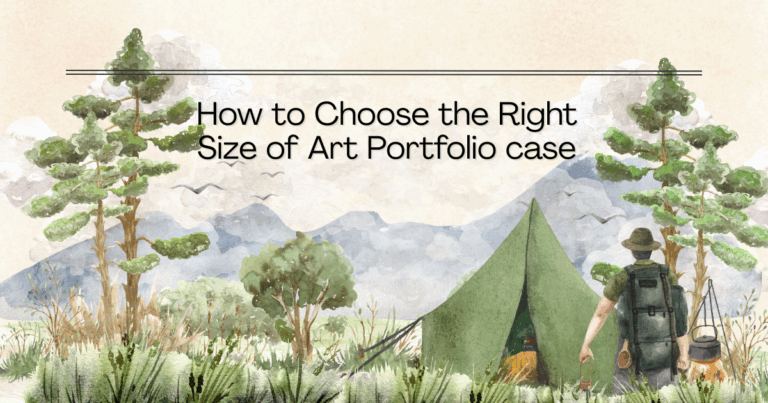Choosing the right art portfolio isn’t just about aesthetics—it’s about finding a case that protects your work, fits your medium, and supports how you want your art to be experienced. Whether you’re a student building your first portfolio or a professional preparing for exhibitions, the portfolio you choose should reflect both the nature and needs of your artwork.
Here’s a step-by-step guide to help you make an informed choice, based on your artwork’s medium, size, and presentation style.
Consider the Type of Artwork
Before anything else, think about the kind of art you produce. Are you presenting traditional fine art, digital prints, photography, or mixed media?
Flat 2D work like sketches, prints, and illustrations is best stored in display books or ring binder portfolios.
Mixed media or layered works often need extra space and protection—zippered or rigid cases are ideal.
3D pieces or textured works may require custom mounts, sleeves, or alternative presentation formats altogether.
The form of your work determines what kind of structure and layout your portfolio case should offer.
Determine the Artwork Medium
Different art mediums call for different storage and presentation strategies. Here’s how:
Pencil & Charcoal: Use acid-free sleeves to prevent smudging and yellowing. A binder or flip-folder with non-glare pages works well.
Watercolor or Ink: These require moisture-safe, sealed portfolios—look for waterproof or water-resistant materials.
Acrylic or Oil Paint: These are typically heavier and may be on canvas or board. Use a rigid portfolio with deep compartments.
Digital Art: Can be printed and stored in flat display books. Use high-quality prints and matte sleeves to reduce glare.
Photography: Needs presentation-grade sleeves with archival quality to prevent discoloration or scratching.
Choosing a case compatible with your medium ensures both protection and clarity in how your work is perceived.
Consider Artwork Dimensions
Size matters—especially when your work spans different formats.
Small-scale works (A4/A3) fit well in ring binders, display books, or slim folders.
Large works (18″x24″ or 24″x36″) require oversized zipper cases or art bags.
Avoid folding or trimming your artwork to fit a case—always choose a portfolio that fits your largest piece.
Also, consider future needs. If you’re planning to create larger work, it may be worth investing in a slightly bigger case now.
Identify Your Presentation Style
Do you present your work framed? Mounted on boards? Loosely arranged?
Framed work usually isn’t stored in portfolios, but it still needs protection during transport—use padded bags or boxes.
Mounted or matted work can fit inside flat cases with rigid panels that keep everything in place.
Loose sheets should go into clear sleeves inside a binder or book-style portfolio.
The goal is to keep your work in the same presentation format from storage to display—with as little disruption as possible.
Assess the Need for Protective Features
Preserving your artwork long-term should be a priority. Look for these features:
Acid-free sleeves: Prevent yellowing and paper deterioration
Waterproof or water-resistant covers: Essential for commuting or outdoor travel
Rigid support: Keeps paper from bending or curling
Dustproof zippers and compartments: Great for charcoal or pastel users
Padded interiors or dividers: Useful for transporting mounted or multi-layered works
Even the best artwork can be ruined by poor storage. Choose protection that matches how often—and where—you carry your case.
Evaluate Compatibility with Your Techniques
Lastly, consider how your creative process affects your storage needs.
Do you frequently add new work or reorganize your pages? → Choose a multi-ring binder for flexibility.
Do you need a slim, professional look for interviews? → Use a sleek display book with fixed sleeves.
Do you create heavy or layered pieces? → Go with a zippered case with reinforced sides and handles.
The right portfolio case should support—not restrict—how you work.
Final Thoughts
Your art deserves a portfolio that does more than carry it—it should protect, enhance, and communicate your creative value. By understanding your medium, size, presentation style, and storage needs, you’ll not only choose a portfolio that works—you’ll elevate the way your work is received.
👉 Need Help Finding the Right Portfolio Case?
Browse our collection of professional art portfolios, display books, zippered bags, and ring binders—designed with artists, designers, and students in mind.

